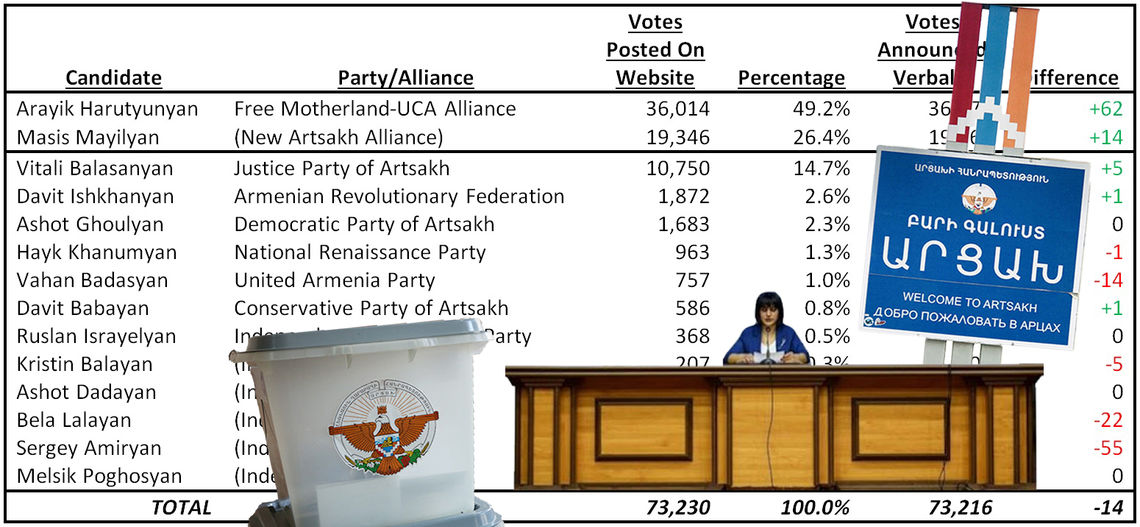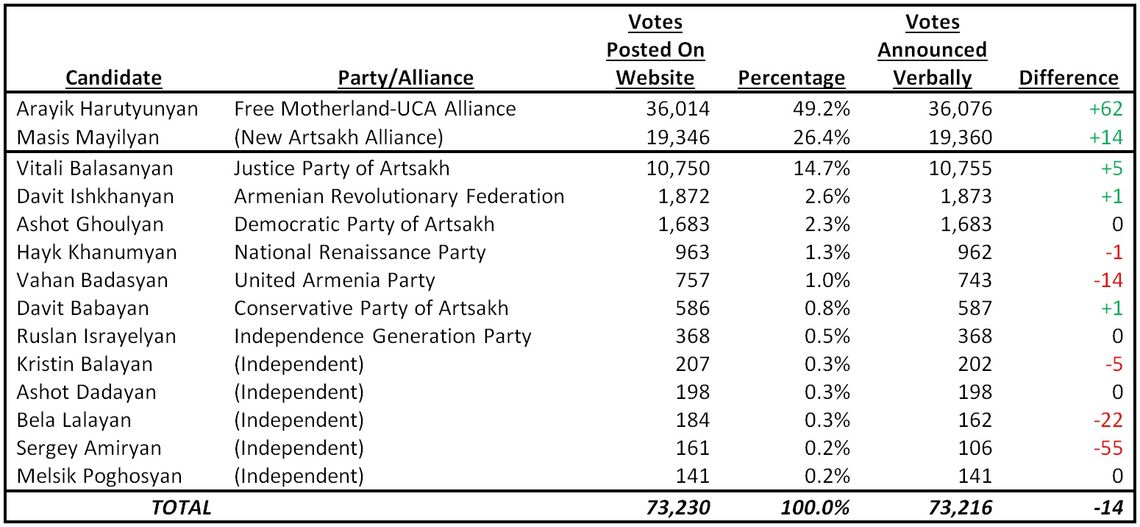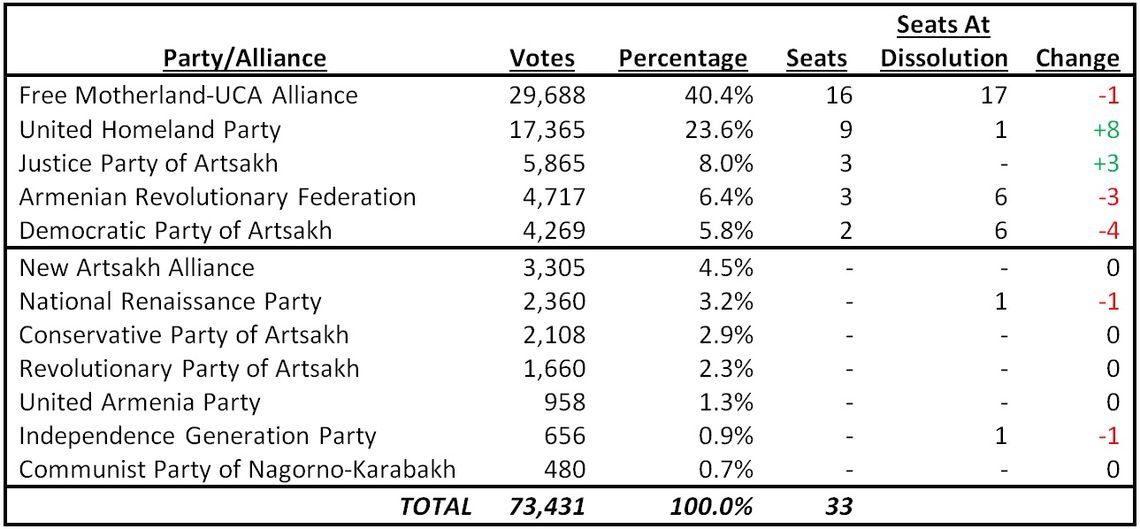
Voters from across the Republic of Artsakh went to the polls in droves on March 31 to make sure their voice was heard in an election that marked many firsts.
- It was the first election under the framework of the 2017 Constitution and an Electoral Code revamped in 2019.
- For the first time, elections for President and the 33-seat National Assembly took place on the same day.
- For the first time, all of the parliamentary seats would be distributed proportionally to parties, based on their total vote share, eliminating the electoral districts used previously.
- For the first time, a televised (and livestreamed) presidential debate took place.
- It was the first election to take place in Artsakh amid a global pandemic. Voters and poll workers were given masks, gloves and their own pens to mitigate contagion risks.
- A historic number of presidential candidates and political parties were on the ballot. There were 14 presidential candidates (previous record was 5 in 2007) and 12 political parties (previous record was 7 in 2015).
Perhaps most importantly, it was the first time that no presidential candidate received the required majority of votes in the first round, necessitating a runoff election to take place in two weeks.
In the past, presidential elections in Artsakh had been quite decisive, with the winner near striking distance of 90% support. In 2012, Bako Sahakyan’s re-election campaign saw his support reduced to two thirds. The detailed results of past presidential elections are shown below:


You will notice that there are two preliminary vote totals. The first represents the totals of the poll-by-poll results, as posted on the official Central Electoral Commission (CEC) website. The second set are the numbers read out verbally by CEC Chair Srbuhi Arzumanyan at the post-election press conference on April 1. The minor discrepancies between the two do not affect the final result or even the percentage distributions. The vote tallies are still considered preliminary and are subject to corrections by the CEC until the final results are published on April 7.
According to the Electoral Code, if no presidential candidate receives an outright majority of the votes cast (50% + 1 vote), the top two candidates would participate in a runoff round election 14 days later, which would be April 14. The (extremely short) official campaign period for the runoff round would start on April 11, which happens to be the day before Easter Sunday.
Easter is not the only challenge the runoff election will face. There were already calls to postpone the March 31 first round due to the global COVID-19 pandemic. Currently, there are still zero confirmed cases in Artsakh but there were fears that observers and journalists from Armenia and abroad could potentially spread the illness to Artsakh’s citizens. The Armenia-Artsakh border has been temporarily closed to non-essential travel since March 26 but election observers and journalists were granted an exception. All observers needed to first take a COVID-19 test in Armenia to confirm they were not carrying the virus before they could cross the border. At this time, it is still not clear how the pandemic will impact the second round.
As mentioned, voters filled out two (differently-colored) pieces of paper and put them into two separate ballot boxes as they voted for a new parliament at the same time as the presidential race. Under the new rules for the parliamentary component of the election, voters choose only a political party. Each party submitted a list of their candidates ahead of the election and will be granted seats in proportion to their vote share. See our previous article for more details on Artsakh’s electoral system and political parties. In order to qualify for any seats, a political party would need to first meet a 5% threshold. If parties contest together under an alliance (bloc), that threshold increases to 7%. The full parliamentary race results are shown below:

The OSCE Minsk Group Co-Chairs (Igor Popov of the Russian Federation, Stéphane Visconti of France, and Andrew Schofer of the United States of America) have taken note of the so-called “general elections” in Nagorno-Karabakh, the first round of which took place on 31 March.
In the context of a comprehensive settlement of the Nagorno-Karabakh conflict, the Co-Chairs recognize the role of the population of Nagorno-Karabakh in deciding its future in accordance with the principles and elements reiterated in the Co-Chairs’ statement of 9 March 2019.[1] The Co-Chairs note, however, that Nagorno-Karabakh is not recognized as an independent and sovereign state by any of the Co-Chair countries or any other country.
Accordingly, the Co-Chairs do not accept the results of these “elections” as affecting the legal status of Nagorno-Karabakh and stress that the results in no way prejudge the final status of Nagorno-Karabakh or the outcome of the ongoing negotiations to bring a lasting and peaceful settlement to the Nagorno-Karabakh conflict.

